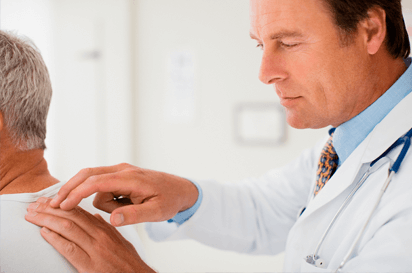Chronic Obstructive Pulmonary Disease

A detailed look at the respiratory system and how it works....more
Chronic bronchitis is long-term inflammation of the breathing tubes (bronchi). It is common among smokers. People with chronic bronchitis tend to get lung infections more easily. They also have episodes of acute bronchitis, when symptoms are worse. ...more
Emphysema is a chronic lung condition in which the air sacs (alveoli) may be destroyed, narrowed, collapsed, stretched, or overinflated. Pulmonary emphysema is part of a group of lung diseases called COPD. Here's what you need to know. ...more
Pulse oximetry is a test used to measure the oxygen level (oxygen saturation) of the blood. It is an easy, painless measure of how well oxygen is being sent to parts of your body furthest from your heart, such as the arms and legs. ...more
Pulmonary function tests (PFTs) are noninvasive tests that show how well the lungs are working. Read on to learn what to expect before, during, and after these tests. ...more
Detailed information about peak flow measurement, a quick test to measure air flowing out of the lungs. ...more
This test is used to find out how well your lungs are working. Read on to learn what to expect. ...more
A chest X-ray is an imaging test that uses X-rays to look at the structures and organs in your chest. It can help your healthcare provider see how well your lungs and heart are working. Certain heart problems can cause changes in your lungs. Certain diseases can cause changes in the structure of the heart or lungs. ...more
A lung scan is an imaging test to look at your lungs and help diagnose certain lung problems. A lung scan may also be used to see how well treatment is working. ...more
More
PMandR is a medical specialty that works to restore function for a person who has been disabled due to a disease, disorder, or injury. ...more
A pulmonary rehab program can help people with long-term (chronic) lung diseases. Here's what you need to know. ...more
Learn about the different specialists who make up the rehabilitation treatment team....more
You as the patient and your family are the most important members of the rehab team....more
It's important to learn the symptoms of respiratory distress to know how to respond appropriately. ...more
Inhalers and nebulizers deliver medicine directly to the lungs. They cause fewer side effects than medicine taken by mouth or injection. ...more
| Pulmonary Rehabilitation Care Managing SymptomsManaging Medications and EquipmentSelf-CarePreventing Complications |
More
Diseases caused by smoking kill more than 480,000 people in the U.S. each year. Here's a look at the risks linked to smoking, as well as information to help you quit. ...more
Follow these suggestions to help you kick the habit, again--this time, for good....more
A look at some of the major air pollutants and how they can affect you....more
Don't think you're safe just because you're inside. The air in homes and other buildings can be more seriously polluted than the outdoor air in even the largest and most industrialized cities. ...more
Work-related lung diseases are lung problems that are made worse in certain work environments. They are caused by long-term exposure to certain irritants that are breathed into the lungs. These lung diseases may have lasting effects, even after the exposure ends. Read on for more details. ...more
| Smoking CessationAir PollutionOccupational Exposures |
There isn't much good that can be said about smoking. Now, on a positive note, do you know how much money you can save if you quit smoking today?...more
Smoking is the main cause of chronic obstructive pulmonary disease (COPD), a serious, debilitating and often fatal illness. Take this quiz to find out more about COPD and how to prevent it....more
The main symptom of emphysema is shortness of breath, which is caused by permanent damage to the small air sacs and small airways in the lungs....more



